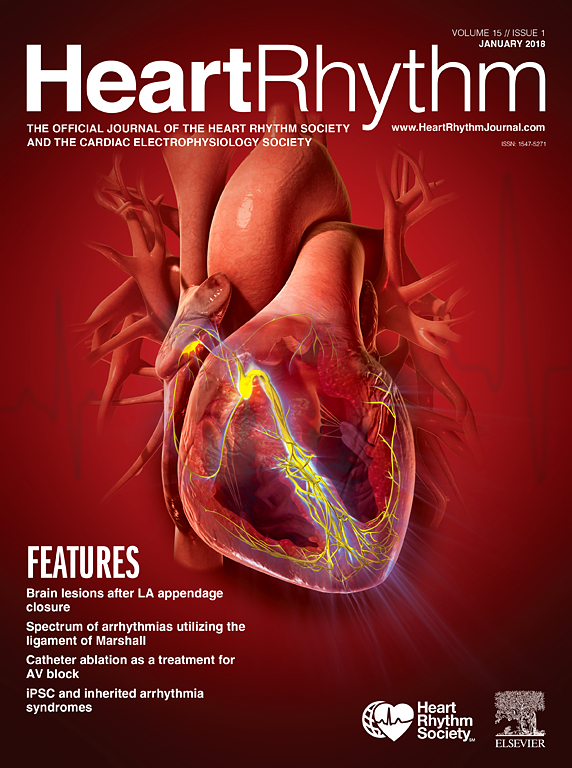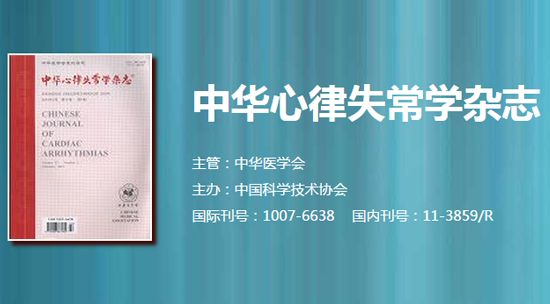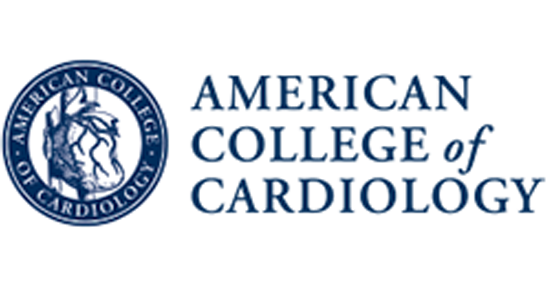Heart Rhythm主编—陈鹏生教授语音速递(四月刊 英文版)

Come and listen to the editor in chief to introduce the most authoritative international heart rhythm research results.
I am Dr Peng-Sheng Chen, the editor-in-chief of Heart Rhythm. I wish to thank you for listening to this podcast.
01
The April 2018 issue of Heart Rhythm has a featured article titled “Dofetilide dose reductions and discontinuations in women compared with men” written by Pokorney et al, Duke University Medical Center. An author interview conducted by our online editor, Dr Daniel Morin can be found on the www.heartrhythmjournal.com website. The authors studied 220 men and women treated with 500 micrograms of dofetilide. They found that more than half of women but only one third of men required dose reduction or medication discontinuation, mostly because of QTc prolongation. An editorial by Clancy pointed out that women have lower expression of genes encoding key cardiac repolarizing potassium currents and connexin43, and also a longer QTc interval. This paper highlights important sex-related differences in pharmacological management of cardiac arrhythmias.
02
The next article is entitled “Race and stroke in an atrial fibrillation inception cohort.” The authors are Patel et al, from St. Vincent Medical Group, Indianapolis, Indiana. The authors assessed racial differences in strokes that occurred before and after AF diagnosis in the Penn Atrial Fibrillation Free study, which consists of 56 thousand patients from the University of Pennsylvania Health System who were free of AF at the index visit. The authors found an inception cohort of 3500 patients with incident AF and without any history of stroke. Among those 3500, about 500 developed ischemic strokes. Nearly half of the ischemic strokes occurred before the diagnosis of AF. Compared with whites, blacks had a higher risk of developing an ischemic stroke. The authors also found that despite a mean CHA2DS2-VASc score of 2.1 in whites and 2.5 in blacks, only 39% of whites and 34% of blacks were receiving anticoagulation. These findings document the racial differences in stroke rates in AF. A limitation of the study is that the authors used an administrative database, which may contain incomplete health information.
03
Next comes “Left atrial thrombus and dense spontaneous echocardiographic contrast i-n patients on continuous direct oral anticoagulant therapy undergoing catheter ablation of atrial fibrillation: Comparison of dabigatran, rivaroxaban, and apixaban” by Wu et al. at Presbyterian Hospital, New York. In 600 patients undergoing preablation TEE, they found that 3% of patients on continuous direct oral anticoagulant therapy had LA thrombus detected before catheter ablation of atrial fibrillation or flutter. Specific DOAC therapy did not significantly affect the rates of LA thrombus detection. Several previous studies have reported lower rates of LA thrombus, ranging from 0-2%. Thus, whether or not TEE is mandatory before ablation remains uncertain. This particular study is limited by the retrospective nature of data collection and that not all patients had TEE prior to ablation procedures, which could have introduced selection bias.
04
The next article is titled “Coexistence of tachyarrhythmias in patients with tetralogy of Fallot” by Mouws et al, Erasmus Medical Center, Rotterdam, the Netherlands. The authors followed 225 tetralogy of Fallot patients for an average of 35 years, with a range of 16-64 years. They found that adult Tetralogy of Fallot patients are initially at risk for SVT development, followed by AF, VT, and VF. Tachyarrhythmias are associated with decreased survival time, and, more importantly, age at tachyarrhythmia development positively correlates with age at death. Adult congenital heart disease is a growing subspecialty in cardiology because many patients survive to adulthood. This paper shows that even after correction, Tetralogy of Fallot patients may develop cardiac arrhythmia on long term follow up. The occurrence of cardiac arrhythmia may be a sign of poor prognosis.
05
The next paper is “Hybrid surgical vs percutaneous access epicardial ventricular tachycardia ablation” by Li et al from UCLA. The authors performed a retrospective analysis of 40 surgical epicardial access procedures between 2004 and 2016. The indication for the surgical epicardial approach was prior coronary artery bypass grafting, valve surgery, or ventricular assist device. When compared with results from a propensity-matched percutaneous-access group, short-term outcomes, complication rates, and 1-year survival free from a combined end point of VT recurrence, death, or transplantation were not statistically different. The study is limited by the retrospective nature of the data collection. However, it shows that when percutaneous access is difficult, surgical epicardial ablation might be a feasible alternative.
06
Afzal et al from the Ohio State University authored the next paper titled “Perioperative management of oral anticoagulation in patients undergoing implantation of subcutaneous implantable cardioverter-defibrillator”. This is a single center study with 137 patients undergoing subcutaneous ICD implantation. Among them, in 17.5% of the patients, warfarin was continued without any interruption. The remaining 82.5% were controls. They found that the warfarin group had a much higher incidence of postoperative hematoma than controls, along with prolonged hospital stay. The study is limited by the retrospective single center data collection. However, the results suggest that a prospective randomized study is needed to evaluate the safety of uninterrupted warfarin during subcutaneous ICD implantation.
07
The next paper is “Canadian Registry of Implantable Electronic Device Outcomes: Longer-term follow-up of the Riata lead under advisory” by Parkash et al, Queen Elisabeth the Second Health Sciences Center, in Halifax. The Riata lead advisory was announced in 2011 and has posed unique management challenges because of cable externalization and insulation abrasion, in some cases leading to sudden loss of defibrillation efficacy. The authors studied 1352 Riata leads under advisory in 17 centers. The 12-year rate of electrical failure for the 8 French lead was 9.45%, whereas the 10-year failure rate for the 7 French lead was 7.25%. The literature suggests that the 8-year failure rate of defibrillation leads should be only around 2%. Based on these findings, the Canadian Heart Rhythm Society Device Committee makes the following recommendations. (1) Consider adding a new high-voltage lead if a system revision is performed for another reason, (2) continue lead performance surveillance with remote monitoring and (3) No extra lead imaging is recommended unless lead performance is an issue or a procedure is being planned.
08
Next is a paper titled “Relative timing of near-field and far-field electrograms can determine the tachyarrhythmia site of origin” by Caldwell et al, Kingston Health Sciences Centre, Ontario, Canada. Even with many improving algorithms, inappropriate shocks for SVT still occur in a significant number of patients with ICDs. The authors hypothesized that the delay of activation onset from the device-detected, far-field electrogram to the near-field, bipole electrogram would allow the differentiation of VTs from SVTs. They found that in healthy patients, the differences between the far-field to near-field electrogram activation onsets were 15 milliseconds for RA pacing, 36 milliseconds for RV pacing, and 58 milliseconds for LV pacing. They then studied an ICD cohort. The median far-field to near-field onset delay was 25 milliseconds for SVT and much longer for VT: 118 milliseconds. Using a cutoff of 100 ms, SVT was successfully discriminated from VT with a high sensitivity and specificity. This new discrimination tool may reduce inappropriate ICD therapies. However, intraventricular conduction delays or bundle branch block may affect the conduction time measurements. More data will be needed in those patients to validate the algorithm.
09
The next paper is titled “Feasibility of extravascular pacing with a novel substernal electrode configuration” by Sholevar et al, Our Lady of Lourdes Medical Center, Camden, New Jersey. A limitation of the subcutaneous ICD is that it cannot pace the ventricle. Therefore, the authors used a commercially available EP catheter acutely implanted in the substernal space via minimally invasive subxiphoid access in 26 patients. Among them, 18, or 70%, had successful ventricular capture. The authors conclude that pacing is feasible from the extravascular substernal location. This new method may provide subcutaneous ICD a way to pace the ventricles. However, the long term stability of this method will need to be investigated.
10
The next paper is titled “Safety and efficacy of atrial antitachycardia pacing in congenital heart disease” by Kramer et al, at the University of Iowa. Their goal was to determine the clinical benefit of atrial antitachycardia device implantation in patients with congenital heart diseases. They studied 91 patients. In these patients, antitachycardia device implantation was associated with a significant reduction in DC cardioversions. Overall, 72% of intra-atrial reentrant tachycardia episodes were successfully terminated by antitachycardia pacing. Patients with levo-transposition of the great arteries experienced lower rates of antitachycardia pacing success than the remainder of the cohort. These studies support the safety and efficacy of atrial antitachycardia pacing in the congenital heart disease population. However, the authors did not have enough patients to conclusively study the differential responses among different types of congenital heart diseases.
11
The next paper is titled “Heterotaxy syndrome and associated arrhythmias in pediatric patients” by Niu et al of Texas Children's Hospital. Heterotaxy syndrome is a rare disorder with complex anatomy involving misarrangements of the cardiac conduction system. They retrospectively studied 337 patients with a median follow-up of 7 years. Among them, 129 patients, or 38%, had clinically significant rhythm disturbances including both tachyarrhythmias and bradyarrhythmias. Factors associated with tachyarrhythmia were moderate to severe AV valve regurgitation, single ventricle anatomy and pulmonary venous obstruction. Isomerism subtype was not associated with tachyarrhythmias. Tachyarrhythmias, but not bradyarrhythmias, are associated with death or need for transplant. The study provided important information on arrhythmia phenotypes of this syndrome, but is limited by the retrospective nature of data collection.
12
The next paper is titled “Using the genome aggregation database, computational pathogenicity prediction tools, and patch clamp heterologous expression studies to demote previously published long QT syndrome type 1 mutations from pathogenic to benign” by Clemens et al of Mayo Clinic. The purpose of this study was to determine which previously published KCNQ1 case variants are likely false positives. They compiled a list of all published and case-derived KCNQ1 missense variants and determined their occurrences within the Genome Aggregation Database, or “gnomAD.” The authors provided evidence for the demotion of 13% previously published LQT1 missense variants. Of these, 29 were demoted because of their frequent sighting in gnomAD. Additionally, in silico analysis and in vitro functional studies have facilitated the demotion of 3 ultra-rare missense variants. This study exposed an important limitation of current genetic testing practice, as significant number of pathogenic mutations are likely benign. It is possible that genetic testing results of other types of congenital arrhythmia syndrome suffer from the same limitations.
13
Next, we have two papers about scar detection. Swift et al from the George Washington University reported a paper titled “Hyperspectral imaging for label-free in vivo identification of myocardial scars and sites of radiofrequency ablation lesions”. They have built a prototype catheter to perform hyperspectral imaging, which theoretically can be 2 to 3 orders of magnitude more precise than current cardiac imaging techniques. The authors then applied these techniques in a rat model of myocardial infarction. They found that hyperspectral imaging based on changes in tissue autofluorescence is a highly effective tool for revealing myocardial scar and discriminating it from areas of acute necrosis caused by RF ablation. A second paper on scar detection is titled “Endocardial infarct scar recognition by myocardial electrical impedance is not influenced by changes in cardiac activation sequence” by Amoros-Figueras et al from Universitat Autònoma de Barcelona. The study was done in 5 pigs with coronary artery catheter balloon occlusion. A total of 137 endocardial sites were studied. Compared to healthy tissue, areas of infarct scar showed a 37% reduction in impedance. They conclude that endocardial catheter measurement of electrical impedance can identify infarct scar regions, and in contrast to voltage mapping, the impedance data are not affected by changes in cardiac activation sequence. Both papers report novel approaches to detect myocardial scar in animal models. If successfully tested in humans, these promising technologies may be helpful in catheter ablation procedures.
14
The next paper is titled “Leptin injection into the left stellate ganglion augments ischemia-related ventricular arrhythmias via sympathetic nerve activation” by Yu et al from Hubei Key Laboratory of Cardiology, in Wuhan, China. Leptin is a peptide hormone produced by adipose tissue whose basic function is regulating energy balance and sympathetic outflow. The authors injected leptin into the left stellate ganglion in anesthetized dogs. The results show that leptin microinjection increases incidence of ventricular arrhythmias, decrease in APD, and increase in APD dispersion, and induces a significant increase in the stellate ganglion neural activity. The data suggest that activated leptin receptor signaling in the left stellate ganglion may be proarrhythmic. The results of this study provides a possible mechanistic link between obesity and pericardial fat with cardiac arrhythmia. However, more data will be needed to test this hypothesis.
15
Next, there are an original report and a review article about calcium leak and arrhythmia. Klipp et al of Portland State University, Oregon, reported that “EL20, a potent antiarrhythmic compound, selectively inhibits calmodulin-deficient ryanodine receptor type 2”. CPVT is an arrhythmogenic disorder caused by mutations in the cardiac ryanodine receptor RyR2 that increase diastolic calcium leak from the sarcoplasmic reticulum. The purpose of the study is to determine whether the tetracaine-derivative compound EL20 inhibits abnormal Ca release from RyR2 in a CPVT mice model with the R176Q mutation. The results show that EL20 potently inhibits abnormal Ca release in R176Q myocytes and diminishes arrhythmia. This work provides a potential therapeutic mechanistic target for the development of antiarrhythmic compounds that inhibit leaky RyR2 resulting from calmodulin dissociation. This paper is followed by a contemporary review titled “Calcium leak—What is it? Why should we care? Can it be managed?”. The review was authored by Boyden et al, from Columbia University. In this review, Dr Boyden summarizes the importance of dysfunctional intracellular calcium cycling in cardiac arrhythmogenesis. She then focuses her review on several potential pharmacological agents that may be useful in suppressing abnormal calcium cycling. These agents include late sodium current blockers, Cam Kinase II blockers, and compounds that directly block type 2 ryanodine receptors. As described above, EL20 is another potentially useful type 2 ryanodine receptor blocking agent. Better understanding and managing calcium leak may lead to better pharmacological treatment of cardiac arrhythmia.
16
The next paper is a contemporary review titled “Use of the SAMe-TT2R2 score to predict anticoagulation control in atrial fibrillation and venous thromboembolism patients receiving vitamin K antagonists” by Zulkifly et al from University of Birmingham, United Kingdom. The components of the score include sex, medical history such as hypertension, treatment such as drugs, tobacco use, and race. This score was developed to identify risk factors highlighting those patients who may be unable to achieve or maintain good anticoagulation control, and for whom a “trial of warfarin” would be inadvisable. The authors summarize the main published prospective and retrospective studies. The results suggest that the SAMe-TT2R2 score is able to predict the quality of anticoagulation control in AF and venous thromboembolism patients. Patients with a score greater than 2 may not do well with vitamin K inhibitors. If they choose to receive a vitamin K inhibitor over novel anticoagulants, more intensive follow up is needed to ensure that INR is within the therapeutic range.
17
The next paper is a Hands-On paper titled “Transcatheter/leadless pacing” by Lloyd et al of Emory University, in Atlanta, Georgia. As typical for all Hands On articles, this paper has great figures and videos that provide practical guidance on how to implant and program the leadless pacing devices.
In addition to the above articles, this month the Journal also publishes a Josephson and Wellens ECG lesson titled “Giant T-wave changes after termination of atrial fibrillation”, an Image of “Transconduit puncture without per-procedural echocardiography in nonfenestrated extracardiac Fontan using a simplified approach guided by electroanatomic mapping” and four EP news articles.
This issue ends with an article to remember the life of Dr Ralph Lazzara of Oklahoma University. Dr Lazzara was a pioneer in cardiac electrophysiology. Under his leadership, Oklahoma University became a center of cardiac arrhythmia studies and helped pioneer the methods of catheter ablation of WPW syndrome. He was a great mentor to many leaders in the field.
I hope you enjoyed this podcast. For Heart Rhythm, I’m Editor-In-Chief, Dr. Peng-Sheng Chen.











